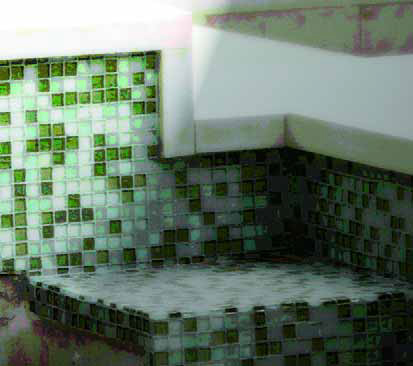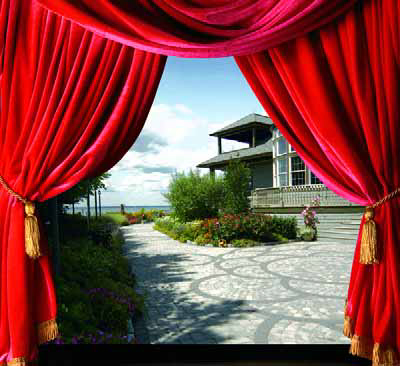construction
There are some things that are better seen than described. In the case of pool and spa equipment, for example, there are situations in which manufacturer instructions or two-dimensional plan drawings simply do not give the installer all the information needed to get things right the first time. As a result - and as everyone who installs equipment sets knows - the plumbing and layout of the equipment usually requires some level of on-site improvisation. In our work of designing hydraulic systems for complex watershapes - everything from commercial pool facilities to interactive waterfeatures and fountains - we've seen the need to find a way to specify precisely how we want our equipment sets to be installed. No two-dimensional plumbing schematic or manufacturer-supplied manual does that part of the job. That is, they do not completely delineate the way
Whether we function as designers or builders or both, we watershapers tend to be flexible folk: We mold ourselves to projects and situations and tasks when we're called on to apply our skills and experience, and this often leads us to perform in unanticipated ways. This sort of adaptability is a way of life for most of us: It's a talent we use to produce success. But even the most adaptable practitioners of the watershaping arts will, every once in a while, encounter a project that shocks the system, alters all formulas and breaks down familiar parameters. In these rare cases, just surviving the process is an accomplishment that brings a sense of relief as well as a sense of amazement that both you and the project made it through to completion. I was recently fortunate enough to be part of just such a project - a fascinating set of challenges now known as the Smithsonian Institution's National Museum of the American Indian in Washington, D.C. It's the last museum that will be
With some details, seeing is believing. That's certainly the case with the one we'll consider in this column, where the images will do much of the work in defining a simple but elegant way of making a statement with any raised bond beam or wall. Yet again, it's testimonial to the good things that happen when watershapers know how to control materials and infuse their work with visual appeal. Most of the time when pool people build small or medium-size walls, they'll automatically be topped with some form of coping or capstone - anything from poured-in-place concrete or stone to brick or some pre-fabricated coping. Many of these walls are
From the grandest waterfall to the smallest courtyard fountain, water flowing over an edge is one of the most compelling of all watershaping “looks.” Whether it’s a vanishing edge or a slot overflow or a trough, runnel or waterfall, these effects all use one common concept – that is, the weir. Simply defined, a weir is a barrier or dam placed in a channel behind which fluid backs up and then falls through a notch and down the face of the weir. In most watershaping applications, water travels over the weir’s edge or brink and into some kind of lower basin, trough or pool. Physically and visually, these systems are driven by
With few exceptions, the most satisfying projects we've undertaken through the years have come when our company has gotten involved with talented architects or landscape architects - and sometimes both - as part of larger project teams. We embrace this sort of work and enjoy taking a role as a resource for other professionals. Through the years, in fact, these collaborations have developed to a point where many of those we work with will automatically call us whenever one of their projects includes any sort of
When I first entered the watershaping industry in the late 1970s, one of the details to which I took an immediate dislike was the practice of wrapping the tile that covered the walls of raised bond beams around the corner and onto step risers and various other vertical hardscape surfaces found around pools and spas. We've all seen it - Spanish Colonial Revivalist tiles of questionable authenticity, extra-bold in color and used to cover highly visible vertical surfaces. To me, these swaths invariably look out of place and have the effect of drawing attention to features that often don't warrant or benefit from the emphasis. It happens to this day because
Sometimes you just know that a client is going to want something special - something nobody else has. I can think of no other entity that better fills that bill than the Walt Disney Co. Justly famed for its remarkable creativity, spirit of innovation and ultra-high standards for design and execution, I knew going in that working with this amazing organization would mean coming to the table with strong ideas, supreme self-confidence and a demonstrated willingness to test boundaries and perform beyond expectations. Our firm, Captured Sea of Sunset Beach, Calif., was founded with those exact qualities in mind and a mission to create fountain systems throughout southern California that are distinctive, unique in concept, superbly engineered and built to last. Through the past eight years, we've been fortunate to tackle several projects for Disney in southern California. In each case, they were looking for watershapes that would delight visitors while enduring the rigors of heavy-duty use and near-constant operation. The call about the fountain featured in this article came in late summer 1999 from Glendale, Calif.-based Walt Disney Imagineering (WDI), the remarkable division of the company responsible for designing its theme parks and attractions. They told us that they were
Sometimes you just know that a client is going to want something special - something nobody else has. I can think of no other entity that better fills that bill than the Walt Disney Co. Justly famed for its remarkable creativity, spirit of innovation and ultra-high standards for design and execution, I knew going in that working with this amazing organization would mean coming to the table with strong ideas, supreme self-confidence and a demonstrated willingness to test boundaries and perform beyond expectations. Our firm, Captured Sea of Sunset Beach, Calif., was founded with those exact qualities in mind and a mission to create fountain systems throughout southern California that are distinctive, unique in concept, superbly engineered and built to last. Through the past eight years, we've been fortunate to tackle several projects for Disney in southern California. In each case, they were looking for watershapes that would delight visitors while enduring the rigors of heavy-duty use and near-constant operation. The call about the fountain featured in this article came in late summer 1999 from Glendale, Calif.-based Walt Disney Imagineering (WDI), the remarkable division of the company responsible for designing its theme parks and attractions. They told us that they were
As milestones go, the project depicted in these pages has been a big one for me - and for lots of other people as well. The grand estate with its outsized home is located in the countryside near Hanover, Pa., a remote setting that offered a set of challenges that has in many ways redefined what is and isn't possible in a whole region when it comes to watershape design, engineering and construction. A full two-and-a-half years in the making (a period broken up, of course, by stretches in which there was no activity on site), this stands as one of
It often happens that the way people enter a space has everything to do with the way they experience it and come to regard its overall design. This was much on my mind as we concluded our work on the Long Beach Island project I've discussed in my last few "Details." By orchestrating access and movement toward the backyard/pool area, we developed a string of transitions that lend a sense of surprise and delight to those entering a beautifully designed and constructed space that literally seems like a world apart. As discussed in previous columns, the backyard features a





















